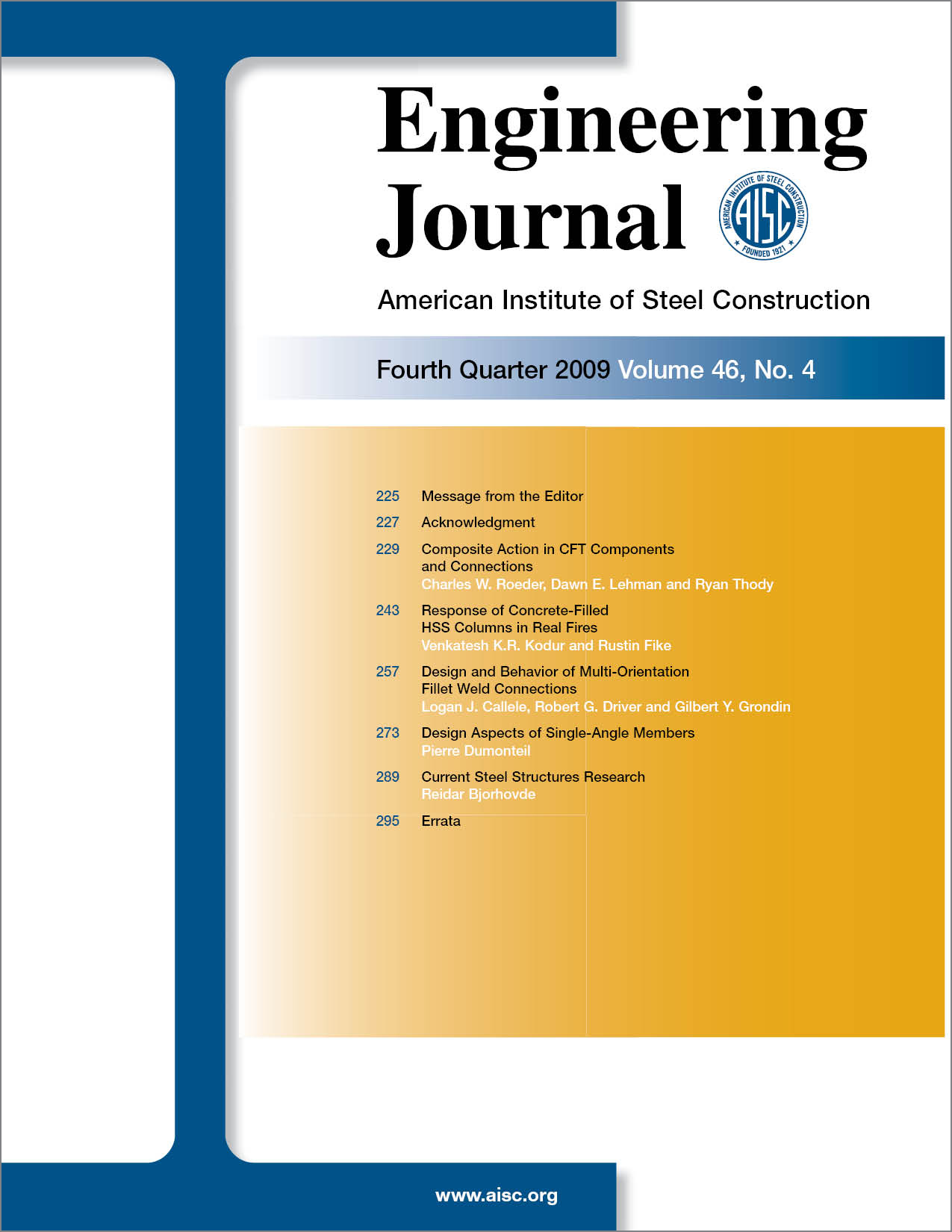Response of Concrete-Filled HSS Columns in Real Fires
DOI:
https://doi.org/10.62913/engj.v46i4.966Keywords:
column stability, hollow structural sections, standard fire, design fire, concrete filled steel tubes, fire resistance, fire and temperature effects, performance-based designAbstract
The use of concrete filling offers a practical alternative for achieving the required fire resistance in steel hollow structural section (HSS) columns. However, the current prescriptive-based approach has a number of constraints that in many applications restrict the utilization of concrete filling for achieving the required fire resistance. To overcome such constraints, a performance-based methodology for fire resistance design is presented in this paper. A set of numerical simulations were carried out to investigate the effect of realistic fire scenarios, loading, and stability-based failure criterion on the fire resistance of concrete-filled HSS columns with lengths ranging from 3.8 m (12.5 ft) to 10 m (32.8 ft). It is demonstrated that by adopting a performance-based approach, it is possible to achieve the required fire resistance in CFHSS columns in most practical situations.

